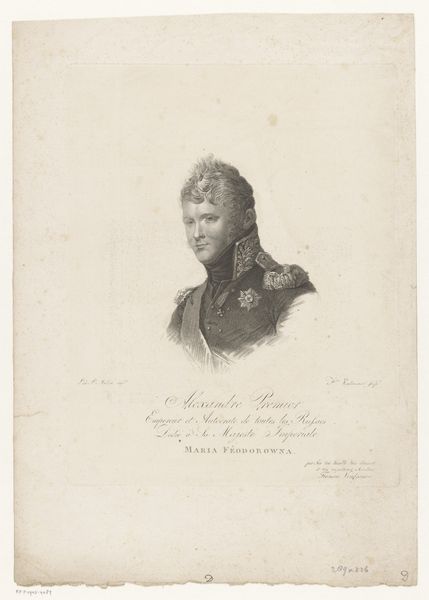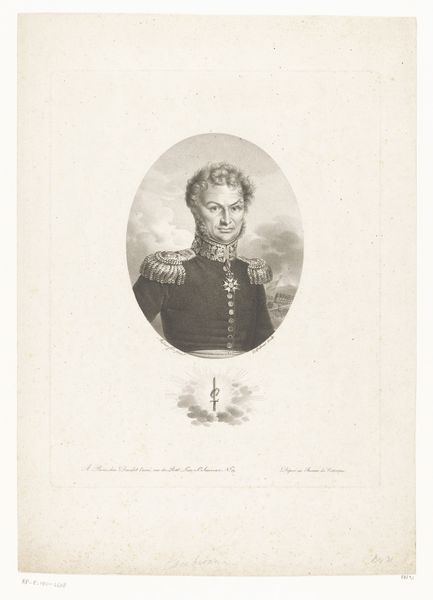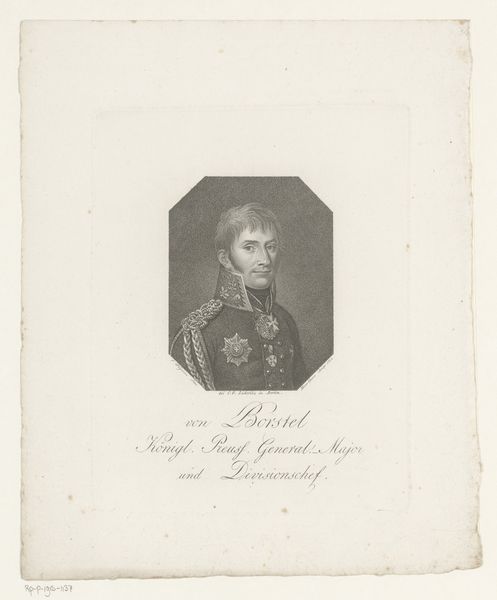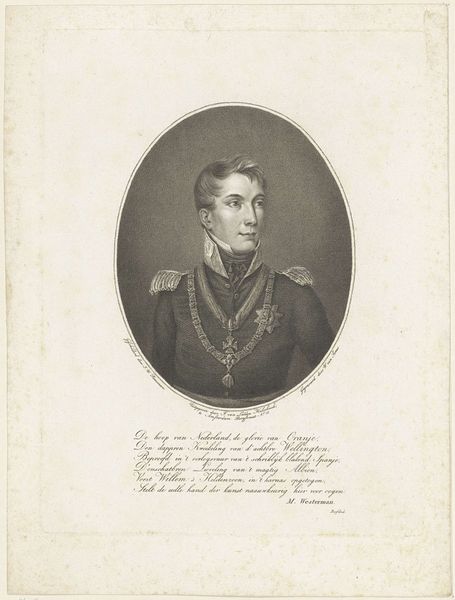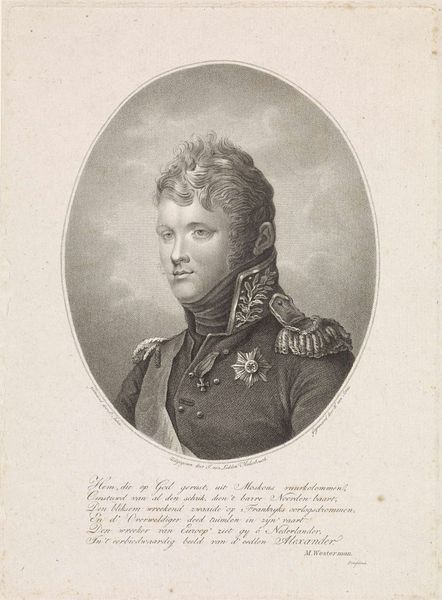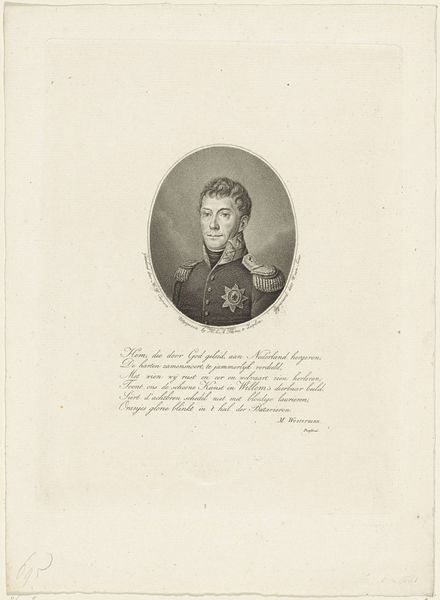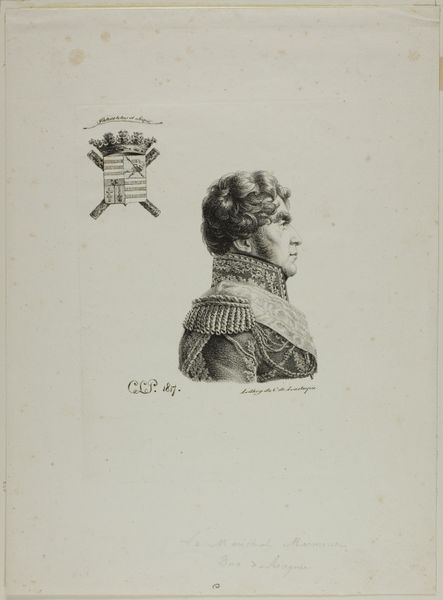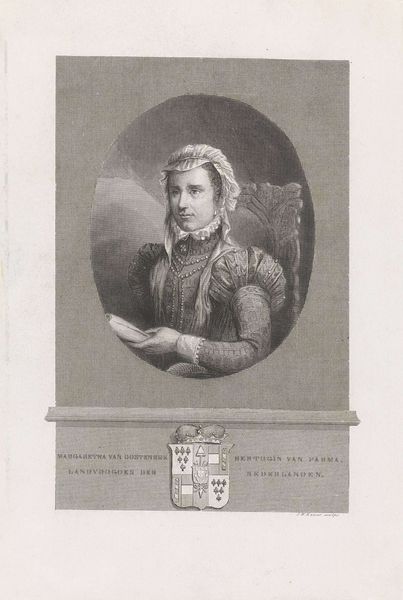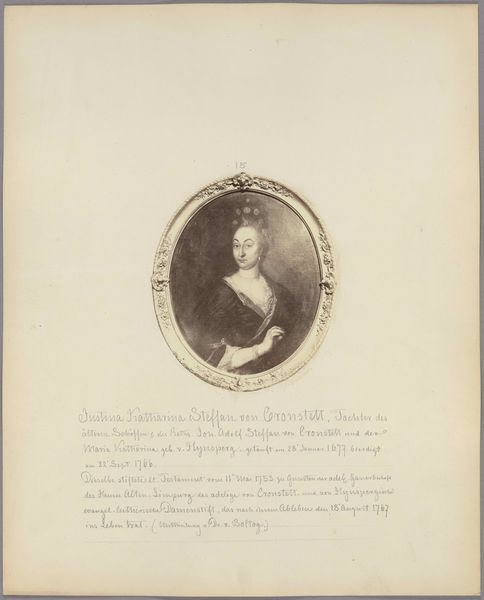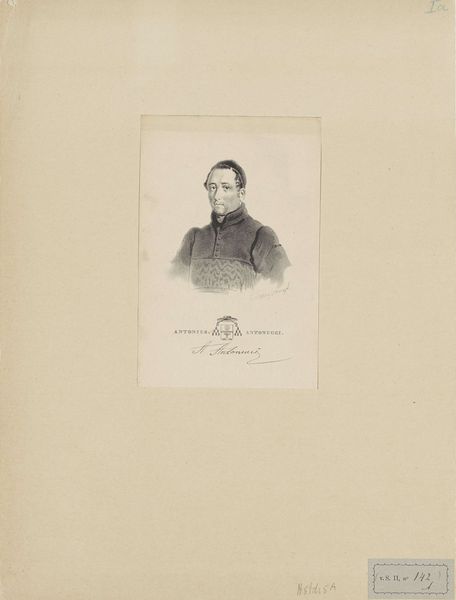
drawing, print, ink, pencil, pen, engraving
#
portrait
#
drawing
#
neoclacissism
# print
#
ink
#
pencil drawing
#
pencil
#
pen
#
history-painting
#
engraving
Dimensions: height 235 mm, width 180 mm
Copyright: Rijks Museum: Open Domain
Curator: Just look at this incredibly crisp engraving. We’re gazing at “Portret van Alexander I,” Tsar of Russia, a piece that likely saw daylight sometime between 1801 and 1851. It's part of the Rijksmuseum collection, isn’t that grand? Editor: Grand, indeed. My first thought? An echo of power. But a hesitant power, captured in delicate lines. His eyes are direct, almost challenging, yet there’s a vulnerability… like he knows the weight of that crown. The oval framing adds a nice touch, like a cameo or a vintage locket. Curator: Precisely! That oval shape really emphasizes the tradition of portrait miniatures, doesn't it? The artist, Willem van Senus, primarily worked with ink, pencil, and engraving techniques. So you have this interesting blend of precision and artistic flourish. Consider the symbolism present here—Alexander I, as the "liberator" of Europe against Napoleon. The inscription, though hard to make out, is clearly celebratory. Editor: Mmm, interesting "liberator" symbolism, especially given Russia's own imperial ambitions. But beyond politics, notice how the engraving manages to suggest the texture of the Tsar's opulent uniform, those elaborate braids, medals sparkling. It almost feels tactile, a feast of symbolic markers of imperial power. Curator: I find it quite arresting how Van Senus captured that era's fascination with both the classical and the heroic. It's a beautiful distillation of Neoclassical ideals molded into a political portrait. The use of simple lines in pencil and pen for creating this highly detailed and imposing figure just sings to me. Editor: Absolutely, it's like looking into a moment of meticulously crafted legacy. Considering what the monarchy meant during this time, this artwork really sums up power through imagery, where every detail tells a story. It feels like holding a frozen moment of a dream in your hand. Curator: Well said! And a valuable addition to our appreciation of art history. Editor: It leaves me considering how much has shifted in representation, since monarchy started as more an act of performance. It all leads to wonder.
Comments
No comments
Be the first to comment and join the conversation on the ultimate creative platform.
